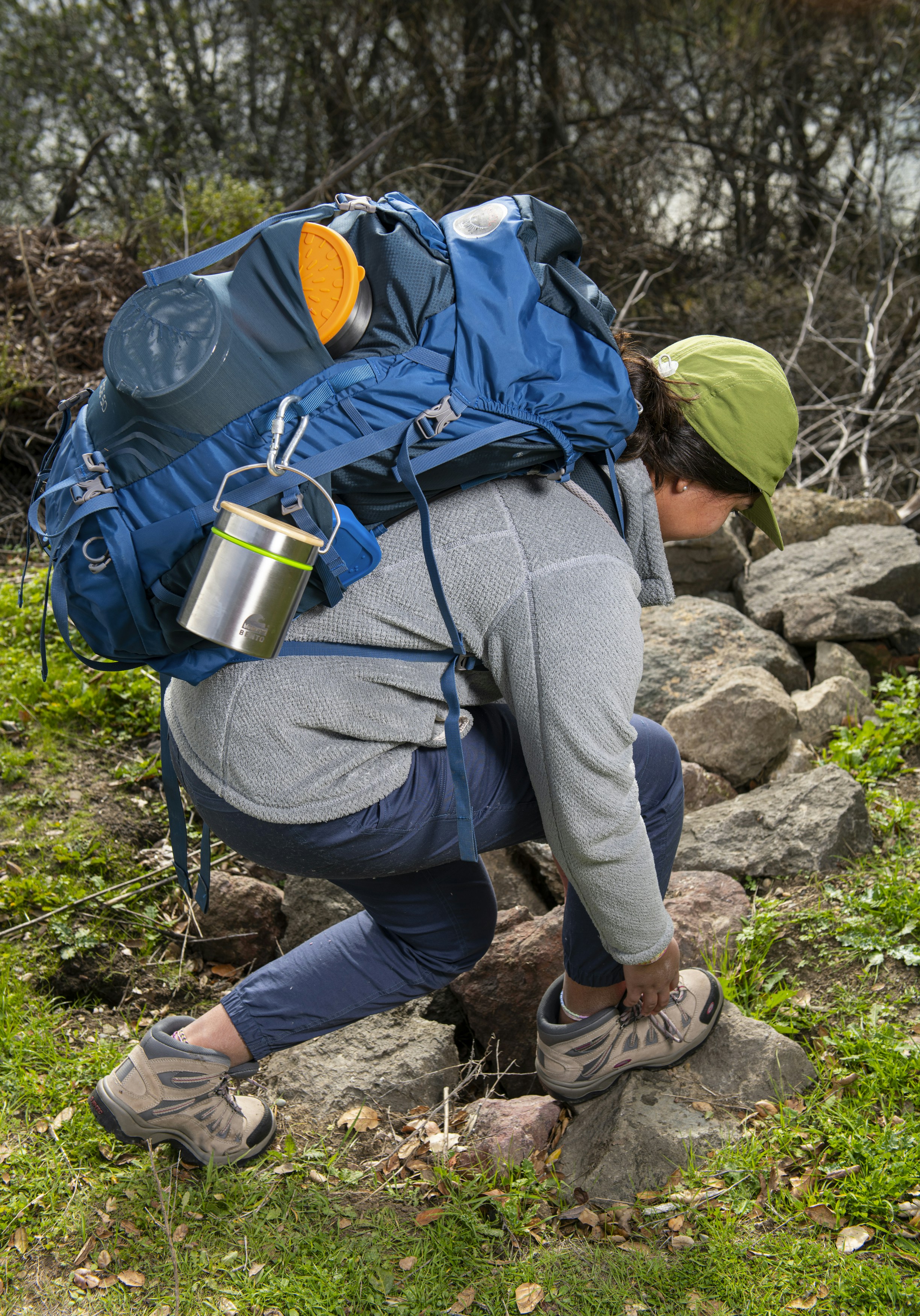
Understanding Weather Conditions
Before embarking on a one-day hiking adventure, it is crucial to check current weather forecasts and understand the various weather conditions that can be encountered. These conditions range from sunny and clear skies to rain, snow, or extreme heat, all of which can significantly impact the hiking experience. For instance, hiking in heavy rain can make trails slippery and increase the risk of hypothermia, while high temperatures can lead to heat exhaustion or dehydration.
It’s essential for hikers to be equipped with weather-appropriate gear. For rainy conditions, a reliable rain jacket can offer necessary protection against the elements, keeping you dry and comfortable. In snowy conditions, snowshoes or waterproof boots may be required to navigate through accumulating snow effectively. On the other hand, when facing high temperatures, sun protection becomes paramount. This includes wearing a wide-brimmed hat, applying sunscreen regularly, and carrying sufficient water to stay hydrated throughout the hike.
Moreover, understanding temperature drops in mountainous areas is vital, especially when the weather forecast indicates a cool or chilly evening. Hikers should prepare by layering their clothes and bringing additional layers to stay warm as temperatures decline. Fleece jackets and thermal base layers are advisable additions to the hiking pack when cooler weather is expected.
Staying updated with real-time weather alerts is essential while navigating mountainous terrains. Many smartphones and dedicated weather apps provide notifications about sudden weather changes, enabling hikers to make informed decisions about their safety. Carrying a portable weather radio can also prove beneficial in remote areas where cell service may be unreliable. Overall, being well-informed about weather conditions, equipping the right gear, and staying updated can greatly enhance the hiking experience and ensure enjoyment while mitigating risks associated with adverse weather.
Choosing the Right Season for Your Hike
When planning a one-day hiking adventure, selecting the right season plays a crucial role in shaping your experience on the trail. Each season presents unique aspects that can significantly influence trail conditions, wildlife activity, and potential hazards. Understanding these seasonal variations can help hikers prepare effectively for their journey.
Spring is often characterized by mild temperatures and blooming flora. Trails that were inaccessible during winter months begin to clear, offering vibrant landscapes and opportunities to observe various wildlife awakening from hibernation. However, hikers should be cautious of muddy conditions resulting from snowmelt and rain. Appropriate footwear is essential to navigate slippery trails. Packing a light jacket or rain gear is also advisable in case of sudden spring showers.
Summer presents another dimension of hiking adventures, often marked by warm weather and longer daylight hours. This season allows for extensive exploration, but it also comes with increased outdoor activity. Hikers may encounter more crowded trails and higher temperatures, which could lead to dehydration or heat exhaustion. Therefore, bringing sufficient water and utilizing sun protection like hats and sunscreen is recommended. Summer also attracts numerous species of wildlife, providing an exciting backdrop for nature enthusiasts.
The fall season introduces spectacular autumn foliage, creating a picturesque environment that many hikers cherish. The temperatures are usually mild, making it comfortable for trekking. However, one must remain vigilant for slippery leaves and variable weather, as temperatures can drop quickly. A warm layer and sturdy footwear can ensure safety and comfort. The fall also presents unique wildlife sightings, with many animals preparing for winter.
Finally, winter hiking can be a magical yet challenging experience. Snow-covered trails transform familiar landscapes into serene, white wonderlands. While winter hiking requires special gear such as snowshoes or crampons to deal with icy conditions, it also offers solitude and breathtaking views. Proper preparation, including layered clothing and awareness of weather changes, is pivotal for a safe adventure.
In conclusion, choosing the appropriate season for your hike enhances the overall experience. By understanding the unique characteristics of hiking in spring, summer, fall, and winter, hikers can better prepare for their adventures and ensure a safe and enjoyable outing.
Prioritizing Safety While Hiking
Ensuring safety during a hiking adventure is paramount, and preparation plays a crucial role in achieving this goal. One of the first steps is to meticulously plan your route. Familiarize yourself with the terrain, identify entry and exit points, and be aware of the estimated time required to complete the hike. By having a clear understanding of the path, hikers can avoid unnecessary risks and navigate potential hazards more effectively.
It is also vital to inform someone about your hiking plans, particularly if you are hiking in remote areas. Share your expected start and finish times, as well as the specific route you intend to take. This communication can be a lifeline in case of emergency, as it allows others to track your whereabouts and alert authorities if you do not return as scheduled.
Carrying essential safety gear is equally important. Always pack a well-equipped first aid kit, a whistle for signaling, and a reliable flashlight or headlamp in case you encounter unexpected darkness. These items not only enhance personal safety but also ensure that you are prepared for unforeseen circumstances.
Sticking to marked trails is another critical aspect of hiking safety. These paths are typically established for a reason, indicating a lower likelihood of encountering hazardous situations. While exploring nature, it is essential to remain vigilant about wildlife. Be aware of the local fauna and know basic safety measures—such as making noise to alert animals of your presence or avoiding attracting them with food.
When considering hiking alone versus in groups, there are distinct advantages and disadvantages to both. Solo hiking offers solitude and personal reflection, but it comes with increased risks. Conversely, group hiking encourages accountability and shared decision-making, enhancing safety in challenging situations. Regardless of the choice, ensuring good communication among group members or with someone who is not on the hike is crucial.
Adopting a Healthy Hiking Mindset
Hiking is not only a physical activity but a holistic lifestyle choice that significantly contributes to mental and physical health. Engaging in this outdoor adventure can enhance overall fitness levels, as it provides a vigorous workout that helps in building strength and endurance. Regular hiking increases cardiovascular health, strengthens muscles, and improves flexibility, making it an excellent addition to one’s fitness routine. Moreover, this activity is adaptable for all skill levels, allowing one to choose trails that match their capabilities, thereby setting achievable fitness goals.
Besides the physical benefits, hiking is renowned for its capacity to reduce stress and promote emotional well-being. Nature has a therapeutic effect, helping individuals disconnect from the hustle and bustle of daily life. The tranquility of forest trails or mountain vistas encourages mindfulness, allowing hikers to immerse themselves in the present moment and appreciate the beauty surrounding them. This connection with nature can lead to significant improvements in mood, fostering a sense of joy and tranquility.
As you embark on your hiking adventures, consider setting realistic goals that align with your fitness level and aspirations. Whether it’s a specific distance, the elevation gained, or even the frequency of your hikes, having a target can motivate you to stay active and engaged with the outdoors. Embrace the journey of self-discovery that hiking offers; as famed naturalist John Muir stated, “In every walk with nature, one receives far more than he seeks.” This serves as a reminder to appreciate the simple pleasures encountered along the trail.
Ultimately, adopting a positive hiking mindset enhances the experience, making it not just about reaching the destination but also savoring the journey. Whether you are seeking fitness improvement, stress relief, or simply a moment of peace, hiking serves as a valuable ally on your wellness journey.
